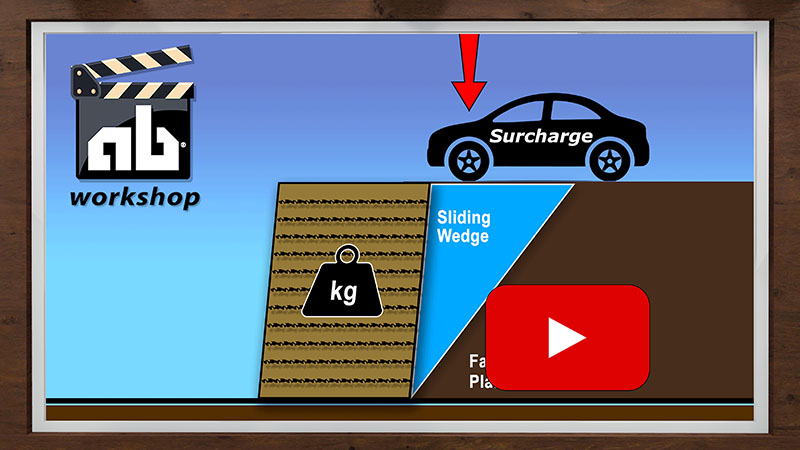Gravity Retaining Walls
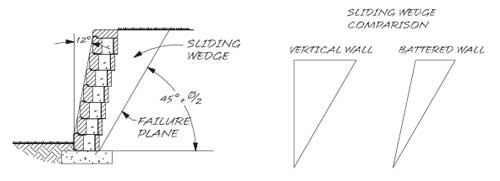
Sliding Wedge Comparison
A retaining wall that relies solely on it’s own weight to stand up is called a gravity wall. Allan Block combines the basic engineering principles of setback, leverage and total unit mass with simple mechanics to make highly stable gravity walls.
Setback & Sliding Wedge
Every retaining wall supports a “wedge” of soil. The wedge is defined as the soil which extends beyond the failure plane of the soil type present at the retaining wall site, and can be calculated once the soil friction angle is known. As the setback of the wall increases, the size of the sliding wedge is reduced. This reduction lowers the pressure on the retaining wall.
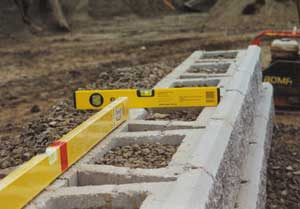
Leveling Blocks
Reference: Allan Block Engineering Manual, UBC 21 Hollow and Solid Load Bearing Concrete Masonry Units, and Terzaghi, K, and Peck, R B, Soil Mechanics in Engineering Practice, John Wiley and Sons, Inc., New York, NY (1967)
Leverage and Total Unit Mass
As the setback of a gravity wall increases, the leverage from course to course increases. This added leverage allows you to build taller retaining walls before reinforcement is needed.
With the hollow core design, Allan Block comes to the job site weighing less than solid, heavy block. Once the cores are filled, the Allan Block units develop the same unit mass as solid blocks. This mass combines with the setback to determine the maximum gravity wall heights. See the Gravity Wall Chart for details.
Reference: Allan Block Engineering Manual
Allan Block’s 12° (Ref) system can achieve wall heights up to 5.5 ft. (1.7 m) without reinforcement in good soils with a level slope above.
Gravity Wall Analysis
Before you analyze any retaining wall make sure you have an accurate picture of the jobsite conditions. Every retaining wall must be engineered to withstand the pressure from the soils and other loads behind and above them. Standard gravity wall analysis considers sliding, bearing and overturning forces. On sites with slopes or surcharges, a global stability check will also be necessary.
Sliding
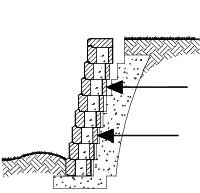
Sliding
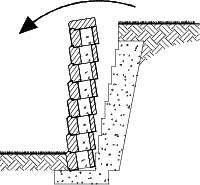
Overturning
Ability of the retaining wall structure to overcome the horizontal force applied to the wall
Factor of safety = 1.5
Overturning
Ability of the retaining wall structure to overcome the overturning moment created by the rotational forces applied to the wall.
Factor of safety = 1.5
Bearing Capacity

Bearing Capacity
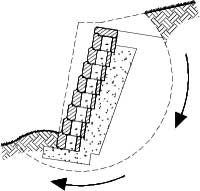
Global Stability
Ability of the underlying soil to support the weight of the retaining wall structure.
Factor of safety = 2.0
Global Stability
Ability of the internal strength of the soil to support the complete soil mass. Contact local design specialist for help in evaluating your site.
Other Considerations:
- Slopes
- Surcharges
- Terraces
Reference: Allan Block Engineering Manual


